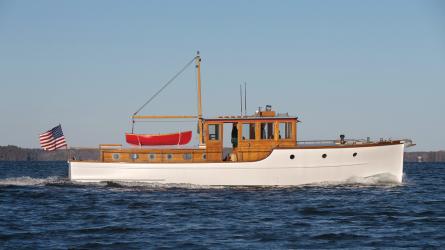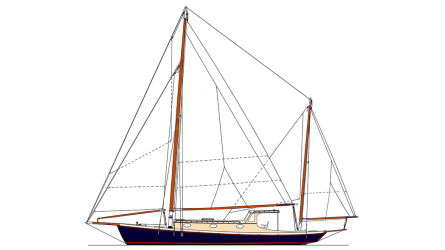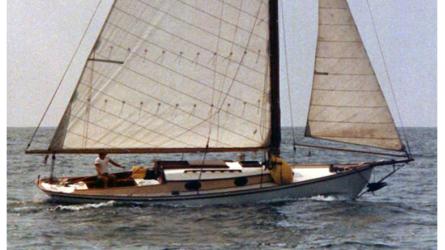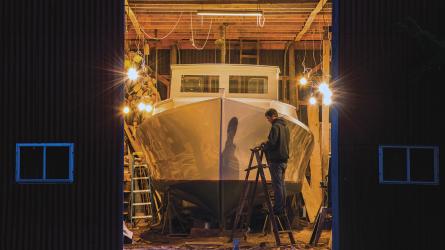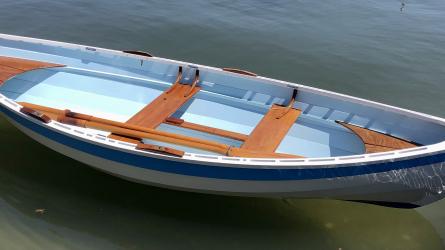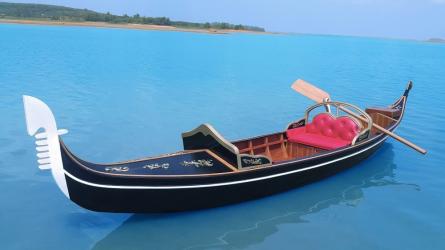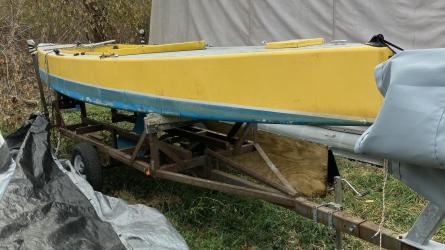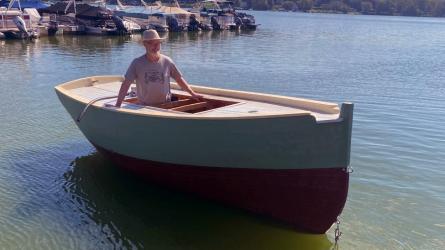July / August 2023
Centerline Saildrive for a Classic Yacht
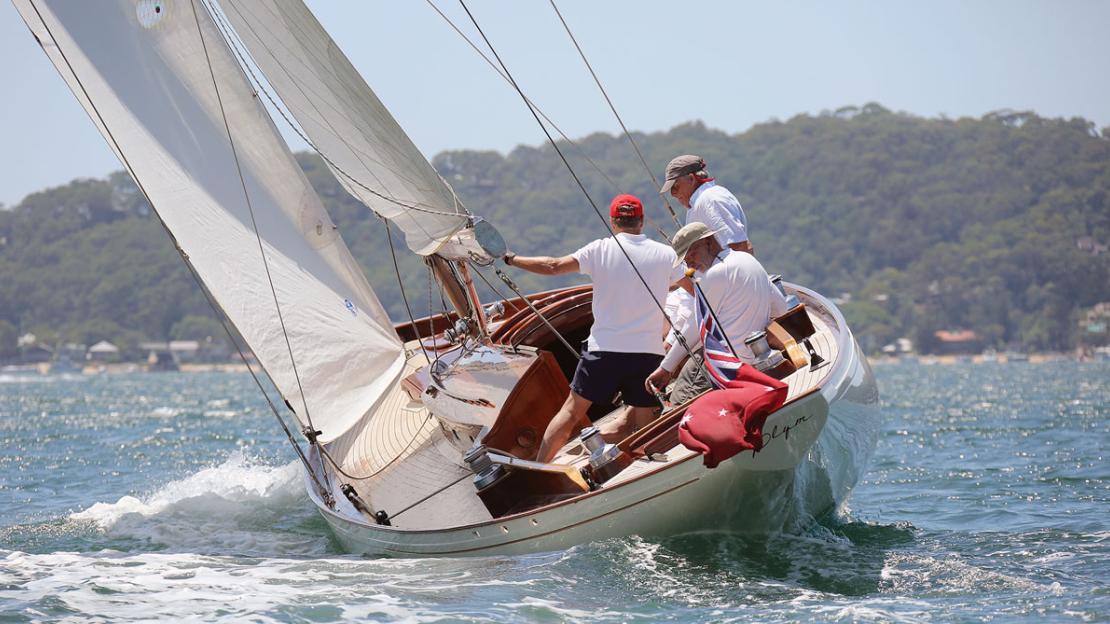
NIGEL SHARP
After purchasing PLYM in 2020, Steve Girdis noticed that the tiller had substantial vibration, or pulse, which was attributed to an earlier change in the keel and rudder con guration of the 1948 Swedish 61 Square Meter sloop. During a refit at his yard in Sydney, Australia, Bruce Gault found a way to install a saildrive to solve the problem.
The 56′ sloop PLYM did not have an engine when she was launched in 1948 in Sweden, but it wasn’t long before her owners decided they needed one. Her first was a gasoline-powered engine installed in the 1950s, with the propeller shaft offset to one side to stay clear of her keel-hung rudder. A Westerbeke diesel replaced the gasoline engine in the 1970s, using the same shaft arrangement. But 20 years later, by then newly arrived in Sydney, Australia, PLYM had a new Volvo Penta diesel and a centerline propeller shaft installed. That change was accomplished by making the original rudder a fixed, permanent extension of the keel and mounting a new spade rudder farther aft.
When her current owner, Steve Girdis, bought the yacht in October 2020, a characteristic was immediately apparent to him under sail: “The tiller pulsed, which was a great shame for such a gracious yacht,” he said. The previous owner and the designer of the spade rudder, and a number of others, agreed that the cause was turbulence from the propeller interfering with the rudder’s efficiency. One solution, they concurred, would be to move the propeller farther forward and use one with feathering blades, but it seemed that the only practical way to do so would be to replace the conventional shaft with a saildrive unit.
For a significant refit in 2022, Steve arranged for PLYM to be taken to Bruce Gault’s boatyard at Taren Point on the outskirts of Sydney. In addition to a number of issues, both major and minor, that he felt needed to be addressed, Steve asked Bruce to look into saildrive options.
PLYM is a 61 Square Meter racing yacht designed by Erik Salander in Sweden and launched in 1948 as MANUELA II. She was built with a conventionally carvel-planked hull at August Plym’s yard in Saltsjöbaden, near Stockholm. Installing saildrives in such hulls can pose difficulties, because essential parts of the structure usually must be altered. Bruce had never installed one before, so initially he was concerned about what it would mean for the hull. He had, however, faced similar challenges in fitting bow-thrusters in carvel-planked hulls, so he began to consider the possibilities. He started by drilling exploratory holes through the hull near the after end of the keel to get a better understanding of the hull’s geometry.
To read the rest of this article:
Click the button below to log into your Digital Issue Access account.
No digital access? Subscribe or upgrade to a WoodenBoat Digital Subscription and finish reading this article as well as every article we have published for the past 50-years.
ACCESS TO EXPERIENCE
2-for-1 Print & Digital Subscription Offer
For this holiday season, WoodenBoat is offering our best buy one, get one deal ever. Subscribe with a print & digital subscription for $42.95, and we’ll give you a FREE GIFT SUBSCRIPTION to share with someone special.
1 YEAR SUBSCRIPTION (6 ISSUES)
PLUS ACCESS TO MORE THAN 300 DIGITAL BACK ISSUES
PRINT+DIGITAL $42.95
Subscribe
To read articles from previous issues, you can purchase the issue at The WoodenBoat Store link below.
 Purchase this issue from
Purchase this issue from




